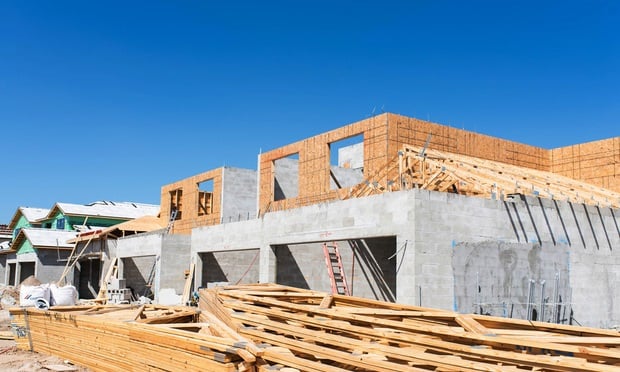LOS ANGELES—Virtual reality and augmented reality are poised to have a tremendous impact across a wide range of industries. That is according to locally based Stephanie Skrbin, a principal with Avison Young.
Skrbin, who recently attended the VRLA Expo 2017, a virtual reality conference at the L.A., tells GlobeSt.com that the conference was both, literally and figuratively, an eye-opening experience, noting that casual observers might not realize the extent to which the technology has expanded far beyond the gaming and entertainment industries.
GlobeSt.com: From attending the conference, what do you see as the future of virtual and augmented realty for the industry?
Stephanie Skrbin: The future of VR and AR isn't a distant scientific future we are talking about—it's already here. In fact, the foundation for much of the technology I saw on display has been in use on a global scale for a solid five to10 years. The momentum is building rapidly for a broader application of this exciting technology and the possibilities are virtually limitless.
GlobeSt.com: What made you decide to attend the expo this year?
Skrbin: One of the reasons I attended the 2017 Expo was to better understand the range of different applications and the potential implications, not only for the real estate industry, but for retailers who are continuing to find new and creative ways to leverage this technology to enhance both the brick-and- mortar and the e-commerce experience for customers. The content currently available is truly incredible and, as the hardware continues to be refined and the price for VR viewing devices declines, the burgeoning VR marketplace is expected to explode. A $1.8 billion industry in 2016 is projected to expand to a $38 billion by 2020.
GlobeSt.com: Can you describe a bit more about what you learned about VR and how it can be utilized in retail?
Skrbin: VR is democratizing experience and creating a world where traditional limitations no longer apply. VR users can experience what it's like to walk on the moon, follow Jacques Cousteau to the ocean floor, play in a professional sporting match with their favorite athletes and experience from a macro to micro level how the systems in the human body function. Imagine the possibilities for retailers and real estate professionals. Retailers are already beginning to experiment with systems that will allow you to virtually shop and even demo products. Rebecca Minkoff utilizes technology in her fitting rooms that allows you to virtually try on clothes. Lowes is currently using a technology that helps you visualize household remodeling products and get a feel for how paint colors or appliances will look in your household. IKEA recently announced that it will be one of the launch partners for Apple's augmented reality framework bundled into its new iOS 11 release. The new AR app will allow customers to view virtual furniture in their own homes. Customers will take a series of photos of a room in their home before choosing from more than 5,600 products to place in their virtual “room.”
GlobeSt.com: And the technology is also used in real estate, correct?
Skrbin: Yes, VR technology is also being used in real estate, both on the commercial and residential sides. Virtual market and property tours are already becoming more prevalent and more popular. Cushman Wakefield has used this technology for multiple projects, including the sale of Yamashiro in Hollywood, as well as an office project near the Irvine Spectrum Center. A company called Transported has created a platform that allows users to take virtual tours of neighborhoods, as well as walking through residential or commercial properties. This is more than a convenience; it's also a chance to add new layers of information and engagement: pop-up content in the virtual universe can display important market data, detailed content about the building or asset, or interactive menus that allow you to jump from one spot to the next and explore the property or the surrounding community. In creating the content, you can choose the background music of your choice or allow audio cues from a virtual tour guide complete the experience.
GlobeSt.com: And what about the social elements of VR technology?
Skrbin: In an industry where experience has become a priority, the social elements of VR technology are sure to be appealing. Facebook is already starting to use a technology that allows Facebook members who own the hardware to virtually hang out together in different scenarios. Imagine the future implications of a technology that allows you to go to the mall with a friend or family member who lives on the other side of the country or even the world. The technology also allows you to make real purchases at this virtual mall and the experience could also translate to other retail concepts, such as entertainment.
GlobeSt.com: It sounds like VR can apply in pretty much any field. Is that something you saw at the expo?
Skrbin: While VR has innovative applications ahead in fields like education, medicine and the arts, with potential use as a training tool in everything from restaurants to airlines, there are plenty of reasons to be excited about what VR and AR can do for retail and real estate, as well. Brokers can use virtual tours as another step in the qualification process and acquisition representatives can use them to make critical evaluations about a property's accessibility, suitability and value. Prospective tenants can use virtual layouts to select different designs and interiors. IR Architects in California is already using software that allows landlords and developers to conduct a virtual walkthrough to evaluate different layouts and design features. Consequently, any changes can be made up front, as opposed to mid-construction, which can quite literally make a million-dollar difference to the price tag and avoid delays in delivery and project completion. Platforms specific to demographic groups, such as students and seniors, are also burgeoning. Students can use VR technology to go on campus tours and assess student housing and mobility-challenged seniors or their loved ones will greatly appreciate the ability to tour potential residential options.
GlobeSt.com: Some have said that tech tools might be over-utilized. What are your thoughts on that?
Skrbin: While there are some long-term concerns about tech tools being a little too efficient, ultimately having an adverse impact on the job market, the (virtual) reality is that the benefits of VR and AR technologies are likely to far outweigh any modest impact on employment. Retail and real estate professionals should be thinking instead about all the innovative and creative ways that these tools can make their work more efficient, their products more appealing and their places and spaces more inviting and engaging. For those who want to stay competitive, playing catch-up in this emerging field of technology is not an option. Your clients aren't going to want to work with someone who has fallen behind. They are likely to respond, however, to brands and businesses that are working hard to position themselves as innovators and actively looking for new ways to make their clients and consumers lives more fun, convenient and interesting.
Want to continue reading?
Become a Free ALM Digital Reader.
Once you are an ALM Digital Member, you’ll receive:
- Breaking commercial real estate news and analysis, on-site and via our newsletters and custom alerts
- Educational webcasts, white papers, and ebooks from industry thought leaders
- Critical coverage of the property casualty insurance and financial advisory markets on our other ALM sites, PropertyCasualty360 and ThinkAdvisor
Already have an account? Sign In Now
*May exclude premium content© 2025 ALM Global, LLC, All Rights Reserved. Request academic re-use from www.copyright.com. All other uses, submit a request to [email protected]. For more information visit Asset & Logo Licensing.









